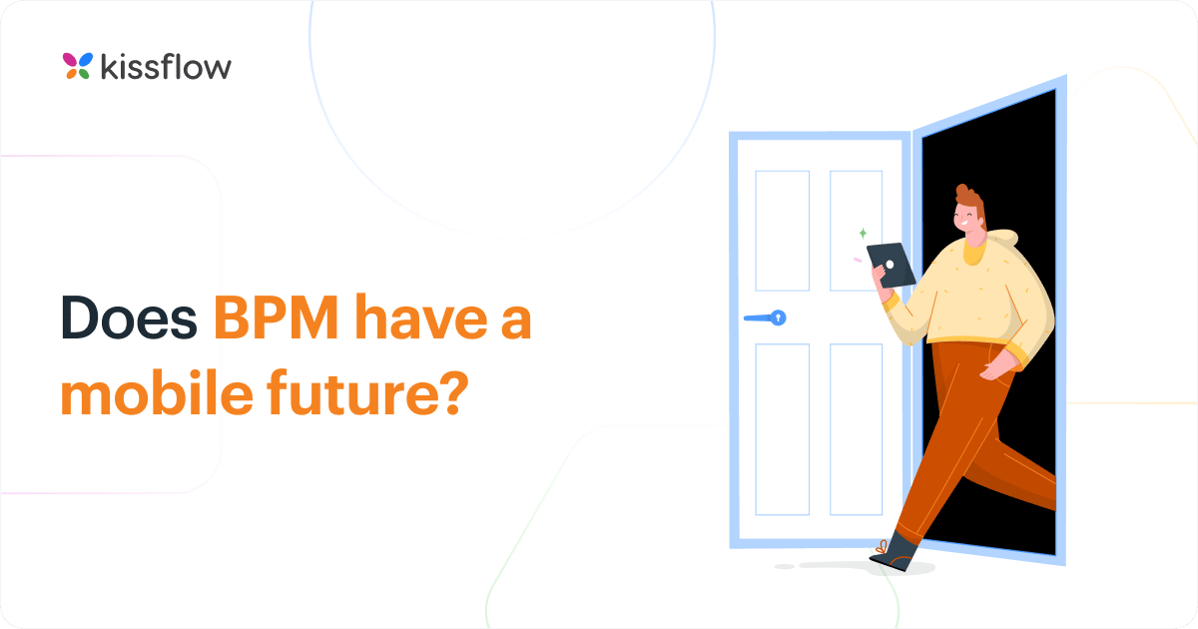Business process management (BPM) has seen an explosion of growth as it has moved from an on-premise software solution to a cloud-based, SaaS model. More organizations than ever are automating their processes with a web-based tool. Cloud BPM can hyperscale, is easy to access, and is more agile than on-prem solutions.

But what about the move to mobile BPM? Like so many other software offerings, will the next big innovations in BPM come from a mobile experience? Or is a mobile-first BPM app simply a pipe dream?
Could a business leader design a process completely on a mobile device? Could necessary complexities be built in? Would it be a full-service offering, or simply a scaled down version of what is on the web?
Below are the reasons why BPM mobile will evolve:
Here’s an attempt to understand how BPM’s relationship with mobile will evolve in the future.
Reducing Complexities
Just because a BPM software tool releases lots of web features on its mobile app doesn’t mean it’s fully mobile-ready. When a BPM vendor takes a web-based version and simply tries to cram features into a mobile application, it only burdens the customer with more problems than solutions.
An ideal BPM solution should continue to eliminate the technical aspects from the process. A user shouldn’t think she is using BPM software, but rather a simple app that solves a clear problem.
Cloud-based BPM software has created a larger market share because it has removed or hidden many technical barriers. As BPM becomes more mobile, it must continue in this effort to remove jargon and complexity and focus more on how the user experiences a business process rather than how a system handles it.
Built for the Moment
Currently, a mobile device is based on consumption rather than creation. We are fine to read a long form post on a 6 inch screen, but very few people will type out the same post on a smartphone.
When related to BPM, it is far more likely that the user experience of participating in an automated process will be heavily mobile-driven rather than creating those same processes. Form and process design have not reached a point where they can function well on a small screen. Therefore, even if you build these advanced features into a mobile application, their adoption would still likely suffer.
Therefore, the mobile path for BPM will focus more heavily on what you can do inside a process rather than creating one. For example, can you participate in an instant chat with another user from within the BPM tool? After approving a meeting, will it automatically be added to your cloud-based calendar? Can you send items in a workflow back to a particular point to restart? Can you reassign a task that needs to be seen by someone else?
These kinds of “in-the-moment” BPM features will lead the way for mobile. Mobile business process management systems will continue to prioritize consumption capabilities and keep creation capabilities in web-based versions.
Keeping Data Always-on
BPM mobile application will also make advancements in becoming the most reliable option for companies in terms of data dependency. Along with quick actions, mobile BPM will reinforce data hygiene, information availability, and consistency in an unprecedented way.
Data reports can be instantly generated and analyzed. In moments, any process owner should be able to not only pull up the status of every item in a process, but should be able to see at a glance how smoothly things are running and where the backlogs are. For mission-critical processes, push notifications can be set up when a certain task falls behind an SLA.
A mobile BPM tool will help organizations stay constantly engaged with the data available to them.
Advancing Towards the Future
It remains to be seen how mobile a BPM app can be, but what is already clear is that mobile is a proven efficiency-enabler channel that will push boundaries for businesses to achieve more with less. Some creative elements of BPM will continue to exist only in web versions, but more and more functionality and analysis will shift over to a Kissflow platform. IT directors and process leaders should examine the mobile business process management market to find vendors who already demonstrate an ability to follow this path.













